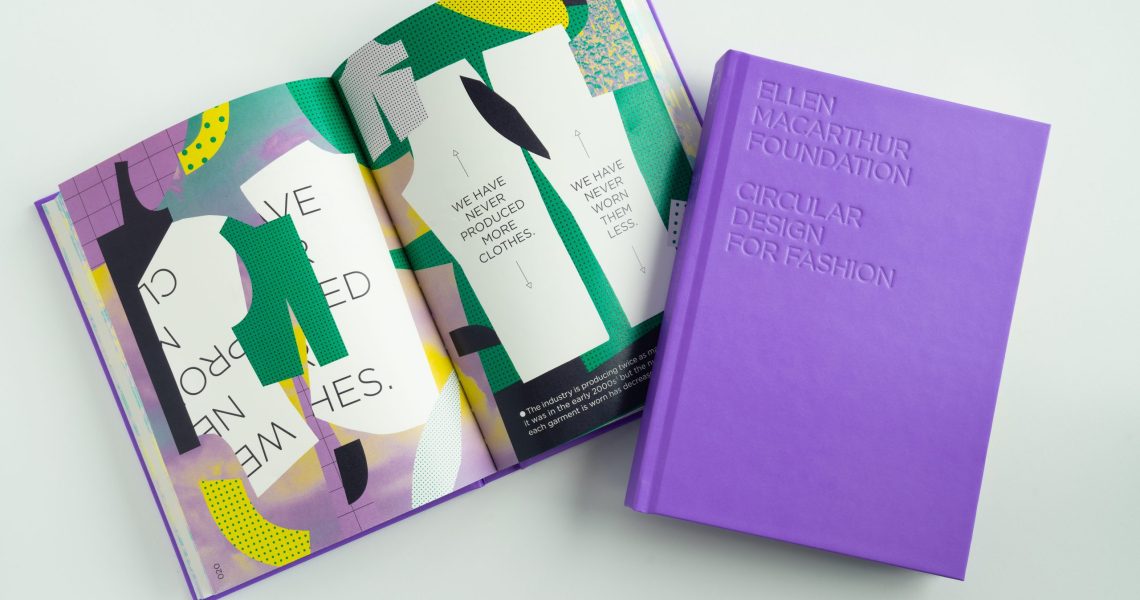In the new book from the Ellen MacArthur Foundation, brands including Gucci, Christopher Raeburn and Marine Serre detail how brands can be more circular, based on their own progress in the space. Their great focus on circularity signals that it will be a dominant topic in the fashion conversation in 2022.
Creating fashion with the whole life cycle in mind might seem like an obvious concept, and yet it is one that some brands are only waking up to this year. The third-quarter earnings for one of the biggest fast-fashion multinational companies, Inditex, are set to be announced on Wednesday. As the company’s brand Zara is aiming to reposition its fast-fashion range through Zara Atelier, a more high-end offering, it is dealing with the same question that most high street retailers are struggling with now: How do you implement circularity into this cycle?
“Circular Design for Fashion,” a book that came out on December 2, shows that there is a deep desire among industry leaders to educate their peers and integrate proven circular design principles into their collections, whether in the luxury or high street category. With insights from over 60 fashion executives from leading brands, the book is set to show how fashion can embrace the circular economy, looking at digitization and degrowth, in particular. Laura Balmond, lead at the Ellen MacArthur Foundation Make Fashion Circular Initiative, who helped put the book together, said the current industry is ill-equipped for the circular economy and needs to evolve in step with innovation.
“The practice of design is not exclusive to designers. The materials, garments, services, shows, supply chains and stores that make up the fashion industry all work the way they do because of innumerable design decisions made by creatives all over the world,” she said. “A truly circular transformation requires upstream actions that address waste and pollution from the outset. It also needs to implement circular business models that decouple profit from the use of raw material production. Doing so will benefit both the economy and the environment.”
Some designers, like the U.K. fashion designer Christopher Raeburn, are looking at circularity as a way to change outdated fashion material composition and learn from companies investing in repair and better longevity for the garments. “We need to be working a lot more with monofiber materials,” he said. “Lots of companies are still blending natural and synthetic materials. Extruding those fibers is really challenging and very little is being done at scale. We can do a lot more to keep products in circularity, either by repairing or remaking.”
Others, like Marine Serre, have made circularity the selling point of their collection and know that this type of accessibility will inspire the next generation of thought leaders in the industry. “The work of the Ellen MacArthur Foundation is a big step for the next generation because it brings people from different fields together, sharing their processes and intentions for the future. This book will undoubtedly inspire and influence the next generations, just for the fact that it exists.”
“By viewing waste and pollution as design flaws and looking through a circular lens, this book empowers designers to take positive, creative action toward a resilient and thriving fashion industry that becomes part of the solution for climate change and biodiversity loss,” said Balmond.
Ad position: web_incontent_pos1
Here are some commonly believed myths on circularity in fashion, paired with the facts according to Balmond.
It’s all about recycling.
While it is important to create products that are easily recyclable and made from recycled materials, circular design considers opportunities to recycle a product alongside other opportunities to keep them in use. Those include reusing and remaking products, both of which retain more of a product’s original value.
It’s all about making products physically durable.
Considering how long a product can be worn before it is worn out is an important part of circular design. But it is not the only element that determines how long something will be used. Emotional durability plays a huge role in a product’s lifecycle and depends on how long people will actually want to use and value a product before it goes out of style. A product’s timelessness, rarity, history and meaning to the wearer all matter.
Designing a single product or service is the solution.
Circular design goes beyond designing single products and services and instead focuses on how to reshape the whole system. For example, supply chains and business models are often not thought of as “design,” because they are more abstract. Yet many people make decisions about how these systems work, and their decisions set in motion how clothing and accessories are made, used and reused.
For definitions of key sustainability terms for the fashion industry, please refer to our guide.




